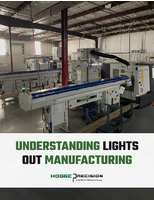SPE Conference to feature keynote by McLaren Automotive manager.
Press Release Summary:
Claudio Santoni, of McLaren Automotive, Ltd., will give luncheon keynote titled "The McLaren MP4-12C Carbon Fibre MonoCell," on September 15, 2010 at 10th annual ACCE. Presentation will cover McLaren's 176 lb carbon fiber-reinforced-plastic safety cell, or MonoCell, to be included in its MP4-12C supercar. MonoCell holds and protects passengers and responds to loads from front and rear aluminum subassemblies, which act as crash structures that can be unbolted and replaced in event of collision damage.
Original Press Release:
McLaren Keynote Discusses CFRP Monocell at 10th SPE ACCE this September
Automaker that Pioneered Carbon Composites in Formula 1, Street-Legal Supercars Will Use CFRP Again in New Vehicle Launching in 2011
TROY (DETROIT), MICH. - Claudio Santoni, function group manager-Body Structures & Body Systems, at McLaren Automotive Ltd. (Woking, Surrey, U.K.) will give a luncheon keynote entitled "The McLaren MP4-12C Carbon Fibre 'MonoCell'" Wednesday afternoon, September 15, 2010 at the tenth-annual SPE Automotive Composites Conference & Exhibition (ACCE), here. McLaren - renowned for its motor racing successes in Formula 1, IndyCar, Can-Am, and Le Mans - is gearing up for the 2011 launch of its new street-legal, two-passenger, mid-engine MP4-12C supercar. A unique feature of this aluminum- and composites-intensive vehicle - and the subject of the SPE ACCE keynote - is its single-piece, 176-pound / 80-kg carbon fiber-reinforced-plastic (CFRP) moncoque / safety cell, which the company calls a "MonoCell." The automaker claims this is the first time a carbon-composite chassis has been offered on a performance vehicle in the target price range of £125,000 to £175,000, and that the vehicle will set new standards for fuel economy and CO2 emissions thanks to Formula 1 (F1) technology and processes.
The MonoCell not only holds and protects passengers, but also responds to loads from front and rear aluminum subassemblies, which, in turn, act as crash structures that can be unbolted and replaced in the event of collision damage. The MonoCell itself is bolted to the windshield surround, which is comprised of a cast-aluminum base and a stamped-aluminum windshield frame, plus 40-mm boron-steel tubes that provide front roll bar functionality. The front fenders, hood, and roof, plus the rear roll bar, which are not subject to as severe loading as the front roll bars, are aluminum. The rest of the vehicle's lightweight, aerodynamically efficient, highly complex exterior body panels are sheet-molding compound (SMC) composite.
McLaren Keynote Speaker Describes Development of Unique CFRP Chassis
McLaren has pioneered the use of carbon composites in race cars and passenger vehicles. The company's first venture into CFRP was on its 1981 F1 MP4/1 race car, which ended up setting a trend that all Formula 1 race cars have followed since. In 1993, McLaren introduced CFRP to street cars on its 1993 McLaren F1 supercar, and then used its experience for a joint-development project with Daimler AG in 2003 for the higher volume Mercedes-Benz SLR McLaren supercar, which ended production in late 2009. With its new, in-house designed MP4-12C supercar, CFRP was again a key material thanks to its unparalleled ability to offer light weight, high strength, torsional rigidity, and longevity.
The ACCE typically draws over 400 speakers, exhibitors, sponsors, and attendees from 14 countries on five continents with fully one-third indicating they work for a transportation OEM involved in automotive, heavy-truck, agricultural, off-road, or aerospace/aviation. Held annually in suburban Detroit, the SPE ACCE provides an environment dedicated solely to discussion and networking about advances in the automotive composites industry. Its global appeal is evident in the diversity of exhibitors, speakers, and attendees who come to the conference from Europe, the Middle East, Africa, and Asia / Pacific as well as North America and who represent transportation OEMs and tier suppliers; composite materials, processing equipment, additives and reinforcement suppliers; trade associations, consultants, university and government labs; media; and investment bankers. The show is sponsored jointly by the SPE Automotive and Composites Divisions.
The mission of SPE is to promote scientific and engineering knowledge relating to plastics. SPE's Automotive and Composites Divisions work to advance plastics and plastic-based composites technologies worldwide and to educate industry, academia, and the public about these advances. Both divisions are dedicated to educating, promoting, recognizing, and communicating technical accomplishments for all phases of plastics and plastic-based composite developments, including materials, processing, equipment, tooling, design and testing, and application development.
For more information about the SPE Automotive Composites Conference, visit the Automotive Division's website at www.speautomotive.com/comp.htm, or the Composites' Division website at www.compositeshelp.com/, or contact the group at +1.248.244.8993, or write SPE Automotive Division, 1800 Crooks Road, Suite A, Troy, MI 48084, USA. For more information on the Society of Plastics Engineers or other SPE events, visit the SPE website at www.4spe.org, or call +1.203.775.0471.
® SPE is a registered trademark of the Society of Plastics Engineers. All other trademarks are the property of their respective owners.




